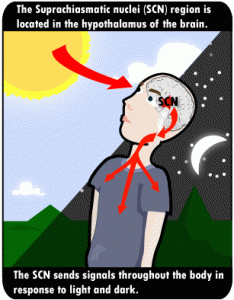A CNN article points out that world suicide prevention day is on September 10.
Some statistics regarding suicides
According to the WHO more than 700,000 People die from suicide every year.
In the US suicide rates have risen between 1999 and 2018. President Joe Biden stated: “In 2019, suicide was the 10th leading cause of death in the United States, and the second leading cause of death for young people between the ages of 10 and 34.”
This was further underlined by a study from the CDC. It pointed out the emergency room visits started to climb in May 2020 for attempted suicide in youth. The CDC stated: “The mean weekly number of these visits was 26.2% higher during summer 2020 and 50.6% higher during winter 2021 compared with the corresponding periods in 2019”.
Triggering factors that make people commit suicide
Suicidal thoughts start when a vulnerable person encounters stressful events. The life situation can become so painful that in their way of thinking suicide is the only way to stop the pain. There are huge differences of opinions: what may be meaningless to one person, may feel devastating to another.
Common triggering factors are as follows.
- Illness and physical discomfort
- Conflicts with family or friends
- Illness of family members
- Death of family member or friend
- Loneliness
In a study 50% expressed two of these 5 triggers, 37.5% expressed one of the 5 triggers. 12.5% expressed three of the 5 triggers.
With the Covid-19 epidemic there are new pressures on people. They cannot freely move around or travel. He/she may have lost a friend or relative to Covid. And people may be anxious about their own survival. I described this here before.
Biochemical changes in the brain with depression
In the past low serotonin levels in the brain were thought to be the main cause of depression. But researchers realized later those medications that increased serotonin levels did not always help depression. They found that dopamine and norepinephrine are also important brain transmitters that play a role in depression. When dopamine levels are low, depression occurs. Similarly, when norepinephrine is low, the patient can develop depression. On the other hand, in bipolar disorder the brain produces too much norepinephrine, which causes manic episodes. https://www.verywellmind.com/the-chemistry-of-depression-1065137 The physician needs to take a thorough history and note from that which brain transmitter system would be mainly affected. This helps the physician later to decide which antidepressant to choose from to rebalance the brain transmitters.
How to detect stress signals
There are a number of risk factors, which the CDC has outlined, for which the health professional or a family member wants to look in order to assess the suicide risk.
Does the patient have a history?
People with a mood or anxiety disorder, or with an alcohol or substance abuse disorder are at a higher risk of developing depression and suicide.
Did the person experience a loss?
A loss can be a death in the family, a loss of a job or the loss of an important person in a relationship. This is particularly bad when there is social isolation and a lack of support. With Covid-19 millions of people have suffered the loss of a job, social isolation and having to quarantine.
Is it easy for the distressed person to get a gun?
Firearms are a common means for people to kill themselves. When there is easy access to a gun, there is a high probability that the person uses it in times of distress.
History of previous suicide attempt
When a person attempted to commit suicide, but failed, there is a higher risk for them to repeat a suicide attempt and succeed. Also, there is a copycat phenomenon when the news comes out that a famous personality committed suicide. For instance, when the comedian Robin Williams committed suicide in 2014 there was a 10% rise in suicides in the following months all over the US.
Belief system that honours personal sacrifice
Some religious or cultural groups consider suicide a noble solution to a personal dilemma.
A person from this background is at a much higher risk to commit suicide.
Warning signs of pending suicide attempt
There are a number warning signs that point to a higher risk of possibly planning suicide.
- A person may talk about wanting to die or kill themselves.
- Searching online for ways to kill oneself or buying a gun.
- Feeling trapped or feeling unbearable pain.
- Talking about feeling hopeless and having no reason to live.
- Stating that they feel they are a burden to others.
- Drinking more alcohol and using more drugs.
- Acting agitated or anxious. Reckless behavior.
- A person withdrawing or isolating themselves.
- A person sleeping too much or too little.
- Extreme mood swings.
- Talking about seeking revenge or showing rage.
These are all red flags that should alarm you to ask for help. Not all of these alarm signs are present all the time with people who are considering to attempt suicide. When you have suicidal thoughts in the US, call the National Suicide Prevention Lifeline at 800-273-8255. For Spanish crisis support call: 888-628-9454.
Conclusion
World suicide prevention day is on September 10. This reminds us every year that suicide is a colossal problem of society. Stress, loss of health, losing a loved one, a broken marriage and financial loss can all contribute to depression. If patients with mental distress do not receive timely intervention and treatment, the life situation can become so painful that in the patient’s way of thinking suicide is the only way to stop the pain. The key is for the loved ones in the circle of friends to pay attention to the warning signs and bring the suicidal person to the attention of the psychiatric health professionals. Sometimes an in-patient admission to a psychiatric facility may be required to interrupt the negative thinking pattern. Ignoring the warning signs can have devastating consequences. Prevention is the only way to avoid suicide.








